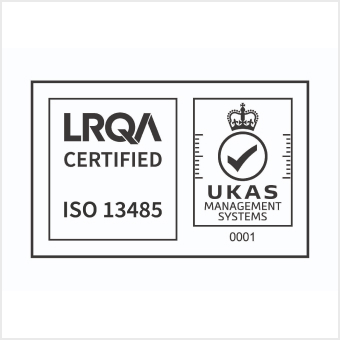ASTM F146
1. Introduction to ASTM F146
ASTM F146 is a standard specification published by ASTM International (formerly known as the American Society for Testing and Materials) that covers the design and performance criteria for interior communication and alarm systems used on ships. It is a critical part of maritime safety, as it ensures that ships’ communication and alarm systems are reliable, easy to use, and capable of providing timely information to crew members and passengers during normal and emergency situations.
This specification outlines the requirements for systems that facilitate the transfer of voice, data, and alarm signals in a ship’s interior, ensuring that these systems function effectively under various operational conditions.
2. Purpose and Scope
The primary purpose of ASTM F146 is to establish the minimum requirements for interior communications and alarm systems, including performance and design criteria. These systems are used for several purposes:
- Communication: Facilitating internal communication between crew members in different areas of the ship.
- Alarm Systems: Ensuring that alarm signals can be transmitted effectively to warn crew and passengers in case of emergencies such as fire, flooding, or system failures.
- Data Systems: Managing and transmitting important operational data related to navigation, engine performance, or cargo handling.
The scope of ASTM F146 includes the design, installation, testing, and operational aspects of these systems, ensuring that they are integrated into the overall safety framework of the vessel.
3. Key Components and Requirements of ASTM F146
ASTM F146 outlines specific guidelines and requirements for the design and performance of shipboard communication and alarm systems. Key components of this specification include:
-
System Design:
- The design must ensure clear communication and alarm signals are transmitted to all relevant areas of the vessel, including the bridge, engine room, control rooms, and living quarters.
- Redundancy and reliability are crucial to ensure the system functions during emergencies, such as power failures or equipment malfunctions.
- The system design should account for various environmental conditions, including noise levels, vibrations, temperature extremes, and moisture.
-
Performance Criteria:
- The communication system must deliver signals with adequate sound levels and clarity, particularly in noisy environments such as the engine room or machinery spaces.
- Alarm systems must be able to generate distinguishable signals, and the system must support different types of alarms for different conditions (e.g., fire, flooding, equipment failure).
- The communication and alarm systems should have sufficient capacity to handle multiple simultaneous alarms and messages, especially during emergencies.
-
System Integration:
- Interior communication systems must be fully integrated with the ship’s general alarm systems, emergency control systems, and navigation equipment.
- The system should allow for quick and efficient response during emergencies by providing immediate access to alarm signals, status reports, and communication channels.
-
Testing and Verification:
- All systems must undergo thorough testing to verify compliance with performance requirements.
- Acoustic tests must be conducted to ensure adequate sound levels and clarity.
- Functional testing should ensure that all components of the communication and alarm systems work as intended under normal and emergency conditions.
- The systems must be tested for reliability, including resistance to failure due to electrical or mechanical issues, and the ability to function in harsh environments.
-
Installation and Maintenance:
- The installation of communication and alarm systems must comply with specific standards for wiring, placement of components, and durability of materials.
- Ongoing maintenance procedures should be defined to ensure the system’s long-term reliability, including regular checks, updates, and component replacements.
-
Safety Features:
- Emergency backup systems must be in place to ensure the communication system continues to function if the primary system fails.
- Redundant power supplies, such as batteries or backup generators, are required to maintain operation in case of a power outage.
- Visual and auditory signals must be distinguishable in both normal and emergency conditions.
-
User Interface:
- The user interface for communication and alarm systems must be simple and intuitive for crew members to operate, especially in stressful or emergency situations.
- The system should include clear indicators for alarm status, communication availability, and system health.
-
Environmental Considerations:
- The system must be capable of functioning in the challenging environmental conditions commonly found on ships, including high humidity, extreme temperatures, and exposure to corrosive saltwater air.
- The components of the communication system should be designed to withstand vibration, shock, and physical impact.
4. Types of Systems Covered by ASTM F146
ASTM F146 addresses several types of communication and alarm systems used on ships, including:
-
Voice Communication Systems:
- These systems are responsible for transmitting voice signals between various parts of the ship. This includes intercom systems, loudspeaker systems, and public address systems.
- The system should allow for two-way communication between the bridge, engine room, crew cabins, and other areas.
-
Alarm Systems:
- These systems are designed to notify crew members and passengers about emergency situations. They include fire alarms, flooding alarms, engine failure alarms, and general emergency alarms.
- Each alarm system must have a distinct signal to prevent confusion and allow crew members to respond quickly.
-
Data Systems:
- These systems transmit operational data related to the ship’s status, such as engine performance, navigation data, and cargo handling.
- The data systems must be integrated with the communication and alarm systems to provide a complete picture of the vessel’s operation.
-
Integrated Communication and Alarm Systems:
- Some ships may use integrated systems that combine voice communication, alarm signals, and data transmission into a single network.
- The integration ensures that all systems work seamlessly together, enabling efficient communication during normal operations and in emergencies.
5. Testing and Verification Process
Testing and verification are crucial components of the ASTM F146 standard. To ensure the reliability and performance of communication and alarm systems, a variety of tests must be conducted:
-
Acoustic Performance Testing:
- The systems are tested to ensure that sound levels are adequate in all areas of the ship, particularly in noisy environments like the engine room.
- The clarity of voice communication and alarm signals is tested to ensure they can be understood without distortion.
-
Signal Transmission Tests:
- Communication signals must be tested for clarity and reliability. This includes ensuring that both voice and alarm signals are transmitted effectively to all relevant areas of the vessel.
- Signal strength and frequency response must also be tested to verify that they meet the required standards.
-
System Reliability Testing:
- The communication and alarm systems undergo reliability testing to simulate operational conditions and verify that they function consistently over time.
- Tests include evaluating system performance during power surges, equipment failures, and other abnormal conditions.
-
Environmental Resistance Testing:
- Communication systems are tested for their ability to operate in harsh environmental conditions. This includes exposure to high humidity, extreme temperatures, saltwater, and vibrations.
- The systems are also tested for resistance to corrosion and wear due to prolonged exposure to maritime conditions.
6. Applications of ASTM F146
ASTM F146 applies primarily to ships and maritime vessels but can also extend to offshore platforms, marine vessels, and other watercraft. The systems specified by the standard are used in various maritime operations:
- Commercial Shipping: Cargo ships, container vessels, tankers, and passenger ferries use these systems to ensure safety, operational efficiency, and communication between different departments on board.
- Naval Ships: Military vessels must adhere to stringent communication and alarm system standards to ensure the safety of personnel during combat or in emergency situations.
- Offshore Platforms: Communication and alarm systems are vital for offshore oil rigs, providing safety signals and operational data transmission to workers in remote, high-risk environments.
- Luxury Yachts and Cruise Ships: High-end vessels must meet safety standards and provide high-quality communication systems for both crew and passengers.
7. Conclusion
ASTM F146 is an essential standard for ensuring the safety, functionality, and efficiency of interior communication and alarm systems on ships and maritime vessels. By setting clear requirements for system design, performance, testing, and reliability, it helps ensure that ships are equipped to handle normal operations and emergency situations with optimal communication and alert systems.



